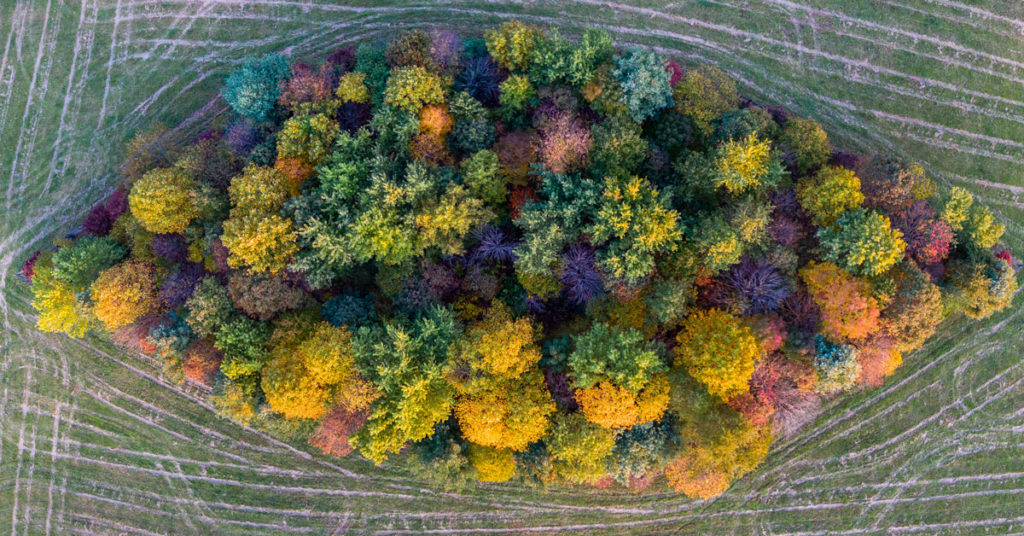
October is finally upon us, and this means a month full of crisp nights, apple picking, Jack-o-lanterns and crunchy leaves. The leaves are of particular interest to me, especially before they drop and are a fusion of colors. While a pigment change seems simple, there is quite a bit of biology and chemistry at work that ensures autumn’s vibrant palette.
Leaves are green in the spring and summer because that is when they are producing chlorophyll. Chlorophyll is important because it helps plants make energy from sunlight, a process we know as photosynthesis. During the growing season, plants produce so much chlorophyll that it drowns out other color chemicals. As summer fades into fall, the days become shorter and less sunlight is available. This is a signal for the leaf to prepare for winter and to stop making chlorophyll. Once this occurs, the green colors begin to diminish.
Carotenoids create vibrant oranges and yellows in leaves. These pigments are present all summer long but are masked by the green of the chlorophyll. Xanthophylls also create yellows in our deciduous plant species and are a sub-class of carotenoids, which is why you often see leaves both orange and yellow in coloring. As chlorophyll continues to recede and sugars increase, a process known as anthocyanin synthesis begins. This contributes to the fiery reds, deep purples, and even pinks you sometimes see in leaves. Extreme weather conditions can also influence leaves. A prolonged drought or an early frost, for example, can make leaves turn brown and fall before they have had time to change colors.
Now that you know a little more about why leaves change colors, I’m sure you want to know which trees and vines are the best to look out for. The following species are known for being autumnal showstoppers:
- Blackgum – Nyssa sylvatica
- Sassafras – Sassafras albidum
- American beech – Fagus grandifolia
- Maple – Acer spp.
- Sugar maple – Acer saccharum
- Red maple – Acer rubrum
- Silver maple – Acer saccharinum
- Virginia creeper – Parthenocissus quinquefolia
- Sourwood – Oxydendrum arboreum
- Sumac – Rhus spp.
- Fragrant sumac – Rhus aromatica
- Smooth sumac – Rhus glabra
- Staghorn sumac – Rhus typhina
- Shining sumac – Rhus copallinum
- Yellow-poplar (Tulip-poplar) – Liriodendron tulipifera
- Birch – Betula spp.
- River birch – Betula nigra
- Yellow birch – Betula alleghaniensis
- Sweet birch – Betula lenta
- Horse chestnut (non-native) – Aesculus hippocastinum
So, when and where can you find the best display of fall leaves in Virginia? There is no hard answer, but leaves will generally begin changing in mid-September throughout late October. You will first see signs of leaf change at higher elevations from west to east, which will progressively move into areas of lower elevation.
If you are hoping to plan a trip in search of fall colors, then I highly recommend keeping track of leaf change through the 2021 Fall Foliage Map. In The Piedmont Environmental Council’s nine-county service area, we can expect to see peak color sometime between October 11 and October 25.
Happy leaf-peeping!

Hallie Harriman is PEC’s Potomac Watershed Field Representative working in Clarke, Loudoun and northern Fauquier County. She can be reached at hharriman@pecva.org.
